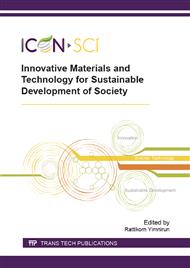p.321
p.325
p.329
p.333
p.337
p.341
p.347
p.351
p.355
The E-Learning on Analysis of the Experimental Results by Using Graphs
Abstract:
E-learning is a popular technique that can solve learning problems of student. In this study, the learning package of data analysis by using graphing paper to attain linear relationship between independent and dependent variables was invented and utilized. The learning package, consisting of contents and answer key video made from Power Point was converted to video format. The samples were 58 students of Bachelor of Science program who were selected by multi-stage sampling and divided into experimental and control groups. The experimental group composed of 29 students, learnt by using e-learning via LMS Moodle at RMUTP website. The control group, 29 students, was performed by a conventional technique through multimedia teaching with PowerPoint. The research tools consisted of the lesson of graphical analysis, the questionnaire for quality evaluation of the lesson and the achievement evaluation. The results were found that the quality of research tools was very good and the average value of learning achievement of the experimental group was higher than the control group, no significant statistic at level of 0.05 by comparing with statistical method of t-test (n=29). It indicated that e-learning system can be used as a practical tool for increasing skill of the samples as well as correspondence between them in classroom.
Info:
Periodical:
Pages:
355-358
Citation:
Online since:
October 2015
Authors:
Keywords:
Price:
Сopyright:
© 2015 Trans Tech Publications Ltd. All Rights Reserved
Share:
Citation:


